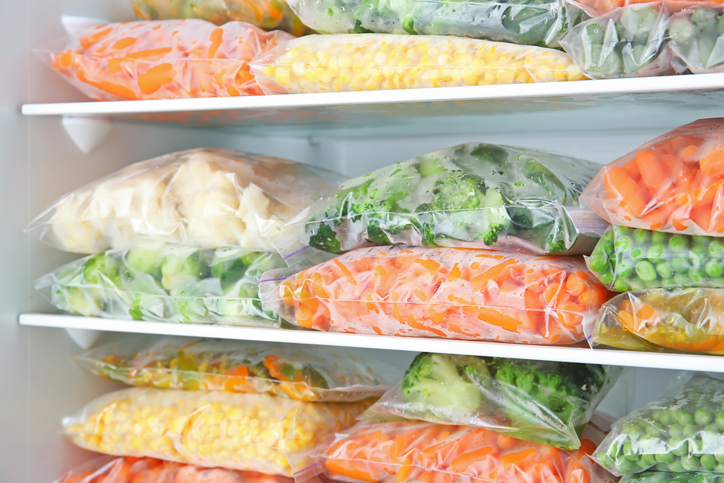Funding
Housing companies and well-known chef show the way to circular economy
Shifting towards a climate-neutral society is becoming more and more urgent and the need for innovative solutions is increasing. Two innovation projects are now being started to contribute to the shift through reduced food waste and long-life appliances.

The climate threat may be the biggest global challenge we have ever faced and switching to a circular economy is an important part of that transition, which requires innovation and development on several fronts.
- Getting society and business to change and switch from traditional linear business models to more circular and bio-based can be very costly and requires a lot of resources. It is thus associated with a risk and is not perceived as quite easy to “just do” on your own. Here, Vinnova has a role to play, says Ida Langborg, who leads Vinnova's work on circular and bio-based economics.
Focus on functional procurement
One of the project Vinnova has financed has focused on how appliances are bought and managed by housing companies with rental apartments. Instead of buying products such as washing machines and refrigerators, Jan Agri and Anders Lundkvist together with Electrolux and the three housing companies Förvaltaren, SKB and ByggVesta want to develop a solution for functional procurement. This means that the supplier guarantees a service instead of a product.
- We want to test under real conditions to learn as quickly as possible. The goal is to show how this is possible. If we succeed, we believe it can be an inspiration for more actors and industries, says Jan Agri, project manager from Tricircular who works with strategic sustainability advice.
The concept is not really new. Most companies use a similar solution, for example when it comes to copying, where they do not buy a copier but instead buy the opportunity to copy from a supplier and pay a monthly fee or per copy. It is then up to the supplier to make sure everything works and that the copier gets optimal life. The same principle should also be able to work with regard to white goods in rental apartments.
- In the past, the focus was mainly on the cost of production. Functional sales mean that the supplier takes all costs into account, from production and maintenance to energy use and recycling. What was previously considered to be the inexpensive option based on price may in fact be the most expensive choice, says Anders Lundkvist, economics doctor and research manager for the project.
For housing companies, functional procurement simplifies in such a way that they know exactly what the various functions cost each month. As the supplier gets closer to the end user, there is also the opportunity to train the user in using the product smarter to increase the service life and efficiency. Maybe it is about filling the washing machine more or cleaning its filters more often? The goal of the project is to develop a model that housing companies can use to procure functions of various kinds.
- Although many have talked about this business model for decades, very little has happened. Many feel insecure as it is a new way of thinking, so there is a very big desire for practical knowledge. Therefore, the project can play an important role, says Jan Agri.
Reduced food waste
Another major project that has managed to engage many different actors is the project for efficient and innovative redistribution of surplus food in Sweden. In simple terms, it is about ensuring that food that is about to become poor at a wholesaler or store should be able to be sold to restaurants rather than thrown away.
The idea for the whole project comes from renowned chef Paul Svensson, who has already tested himself to create a restaurant where the dishes served were cooked by food that would otherwise have been thrown away. Then he had to manage all the logistics himself, which was not sustainable in terms of workload or profitability.
- The goal is, above all, to get more food. Today we produce more than is consumed. The stores could sell more food and the restaurants process more food if the logistics chain was shorter, faster and more intelligent, says Paul Svensson.
Kristina Liljestrand is project manager and expert in logistics and circular economics at Chalmers industrial technology.
- Hopefully, we will see to it that the wholesalers and the stores' wastage is reduced, because the food that is about to become poor instead ends up in the restaurants. In a larger perspective, it is also about educating and inspiring consumers to use much of the food we throw away today, she says.
One of the major challenges is solving the logistics around the deliveries. If the solution is to be established, it is easy to do the right thing and that profitability can be achieved. Already in the feasibility study, some tests have been done, including three Coop stores have delivered food to a restaurant.
- The chef who received the food got something of an aha experience. He thought he would get very bad food and pick out some good ingredients, but instead he got very good food and just needed to take away a bit that was bad. He couldn't understand why some of the products would be discarded, says Kristina Liljestrand.
The two innovation projects have aroused great interest in their respective industries and Vinnova looks forward to following the project journey with the hope that the results will contribute to the transition to a climate-neutral Sweden.
Last updated 19 December 2019

